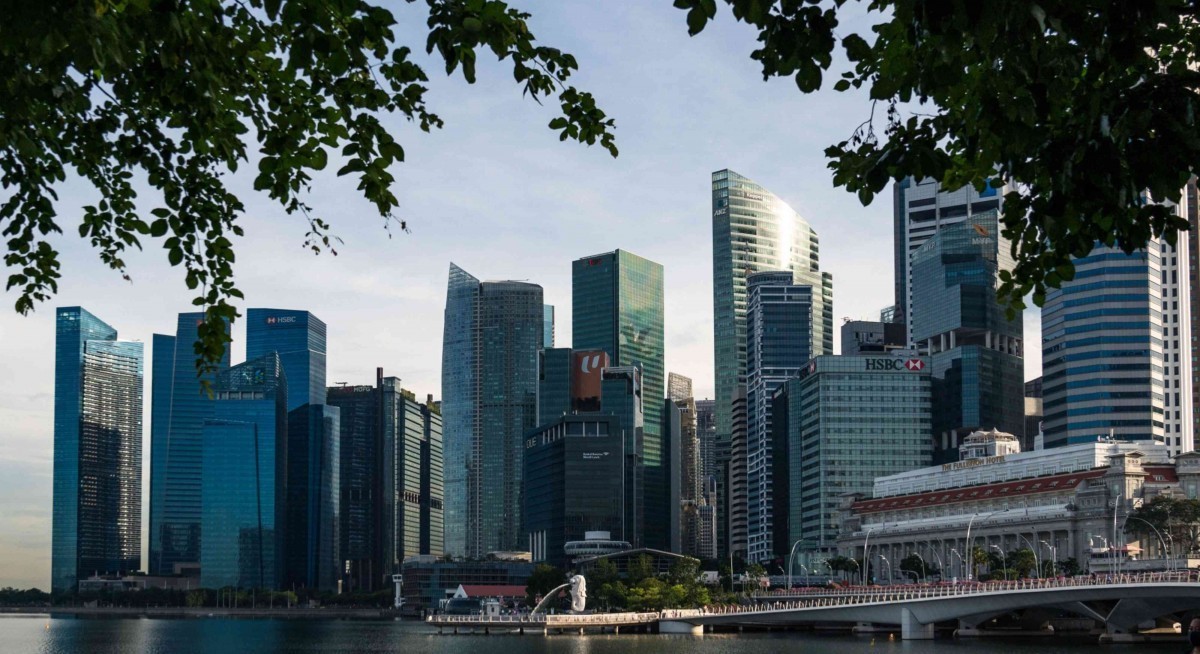Healthy fundamentals continue to bolster Singapore's CRE loans. While Hong Kong office owners face high vacancy rates and a surge of non-core supply pushing down rents on older assets, the banks have curtailed CRE exposures and focus on lending to top-tier developers with low average loan-to-value ratios below 60%. Since 2024, they recognised some idiosyncratic borrowers as bad loans and set ample provisions (averaging 1.5% of total loans as of 1Q2025) as part of prudent risk management.
In available figures as of 2Q2024, DBS' total CRE exposures (including offices) as a share of group loans were highest at 21%, based on Bloomberg Intelligence calculations.
Singapore banks' pretax, pre-provision operating profit (PPOP) remains ample to absorb possible material provisions in a downside scenario before they deplete capital reserves, if that is needed due to increased economic headwinds. In our scenario analysis, their proforma stressed PPOP margin would be 18-35% even if total credit costs surged 5x based on 1Q2025 figures.
As of 1Q2025, the banks had $212million to $325 million in provisions for credit losses, with 24-35 basis points (bps) of total gross loans as prudence, and at least $15 billion in excess Common Equity Tier 1 capital over their 9% minimum regulatory hurdle, with CET-1 ratios of 15.2-15.5%.
See also: UOB prices EUR850 mil worth of fixed rate covered bonds due 2030
As of 1Q2025, UOB’s PPOP margin at 57% and total credit costs at 35bps lagged peers. Still, the lenders’ 2025 credit costs might be within their guidance despite rising economic strains
Credit losses in OCBC's and UOB's CRE loans are contained despite exposure to pockets of stress in overseas markets. Based on a foundation internal-ratings based approach aligned with Basel rules, the average probability of default for OCBC's and UOB's income-producing real-estate (IPRE) loans only rose slightly q-o-q in 4Q2024 amid macroeconomic headwinds.
This reflects the banks' tight risk controls with curtailed exposures; the bulk of their CRE loans are in Singapore with resilient fundamentals, and they have a low average loan-to-value (LTV) ratio below 60% for overall CRE exposure.
See also: Julius Baer books US$186 mil loss provision on property loans
DBS's loan exposures to IPRE, rated using Basel's supervisory slotting approach, imply low default risks in 2H2025 due to resilient fundamentals in its main market of Singapore and tight underwriting, despite pockets of stress overseas.
As of 4Q2024, 88% of DBS's IPRE loans were rated "strong" or "good", with only $269 million defaulted (less than 1% default rate).
DBS's overall CRE loans have an average LTV ratio below 60%, limiting risks from severe property-price drops, and valuation adjustments are unlikely. Systemic stress in its Hong Kong CRE book of $18 billion based on available figures as of 2Q2024 is low, since 60% of the exposures are to high credit-quality obligors with strong sponsors and low overall LTV of about 50%.




